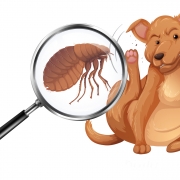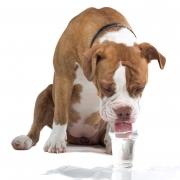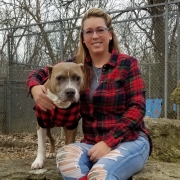Hard Truths: Vets & Suicide
BY KERRI WIEDMEYER, DVM, WVRC
It is not uncommon to think veterinary medicine consists of playing with rambunctious puppies and purring kittens. Unfortunately, these interactions are a rare highlight in what can be a grueling profession. A study published by the American Veterinary Medical Association (AVMA) in January 2019 showed that veterinarians are 3.5 times more likely to commit suicide than the general population. This may come as a shock to most people. How can someone around animals all day long be sad or depressed or have suicidal thoughts?
This increased rate of suicide in the veterinary field can partially be attributed to the personalities of those individuals who are drawn to the veterinary field. Veterinary school is a very rigorous program. Those who apply are typically very driven and hardworking, and many may even consider themselves to be perfectionists. Unfortunately, these qualities are also linked to increased personal performance standards, stress and anxiety. Veterinary school also comes with a huge financial burden, and it is not uncommon for veterinarians to be hundreds of thousands of dollars in debt after their schooling is complete.
For most veterinarians, our days consist of examining animals, assessing their problems and diagnostics, coming up with and discussing treatment options with owners, and record keeping. While that does not sound like a stressful day, it is compounded by the fact that pets cannot communicate what is wrong or where they hurt. This can add another layer of complexity and stress to the practice of veterinary medicine.
The wide range of emotional situations encountered by veterinarians on a daily basis also contributes to high suicide rates. For example, a veterinarian could be in an exam room where they had to patiently examine an overzealous, wiggly puppy, only to walk into the next exam room containing an older dog who, after examination, is found to have an abdominal mass which means a discussion of possible cancer with his owners. It can be quite the emotional rollercoaster. Breaking difficult or unexpected news to owners can be a very taxing part of the job, as is carrying out the difficult task of euthanasia. Veterinarians are trained to exude empathy and compassion in these situations, but this can take a toll over time. It may lead to an increased incidence of compassion fatigue in the field.
Client interactions also add an additional layer of stress to the profession. Often, clients will try and research symptoms on the internet and come to a presumptive diagnosis, which can lead to confusion as to why veterinarians may recommend certain diagnostics to determine the cause of their pet’s symptoms. In cases where even vast testing does not lead to a specific diagnosis, clients can become angry and frustrated that their veterinarian cannot figure out what is wrong with their pet. Long wait times at emergency facilities is another source of irritation for clients that can impact client-veterinary interactions. Clients are also typically emotionally distraught when dealing with difficult news about their pet. Sometimes, these feelings can be redirected as anger towards their veterinarian.
Finally, another reason the field has high suicide rates is that struggles with work/life balance can compound these other stressors for the veterinarian. They tend to work very long hours to accommodate clients and their pets, and they often stay longer than they’re scheduled to perform procedures, complete surgeries and finish paperwork. Over time, this increases emotional burnout that, if not corrected or treated, can increase the potential for suicidal tendencies.
When faced with feelings of suicide, unfortunately, veterinarians are also equipped with the knowledge of how to do it. They have access to anesthetic, pain and euthanasia drugs, as well the knowledge of how to combine them to be lethal; this can be used to facilitate suicide in a different or debatably easier way than the general population.
How Can You Help?
Finances are a large factor of stress for both the pet owner and the veterinarian. Owning a pet comes with its own financial burden. Vaccines, diagnostics, treatments, medications and procedures cost money, and owners should be prepared for possible costs that may occur over the years. Please keep in mind that most people do not become veterinarians for the money. It is not the lucrative job often associated with having “Dr.” before one’s name. Thus, it is unjust to think that a veterinarian is recommending a diagnostic treatment or procedure to pad their pocketbook. Payments go toward running a clinic, staff, equipment, medicine and upkeep. So having a separate emergency savings account for your pet and understanding the potential medical costs that come with pet ownership is ideal. Pet insurance is also a growing market and can be a cost effective option for routine wellness and emergency pet expenses.
Be patient. Your veterinarian is not making you wait on purpose. They are likely running around treating as many animals as efficiently as possible. This means they might not have not had lunch, gone to the bathroom or even had a drink of water.
Remember that your veterinarian is a human being who is just trying to do their job to the best of their ability. Treat them as you would want to be treated; with respect and kindness. Remember that they took an oath to do no harm, and they just want what is best for your pet. And please—the next time you talk to or see your veterinarian, say thank you. Those words mean more than you might think.









